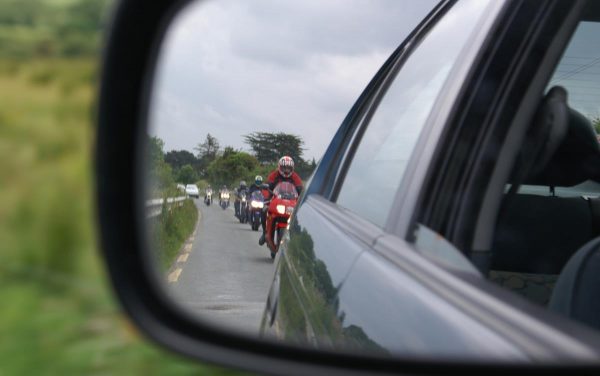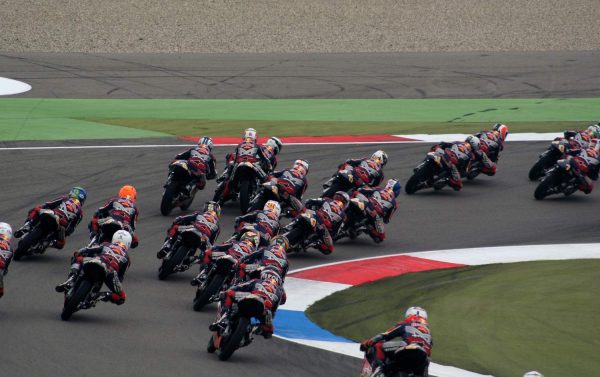Group motorbike rides are more fun with friends, but with too many it can be both frustrating and dangerous unless you set the rules early and have a plan.
Ideal group size
The ideal group size is a small group. If you have a lot of riders, break them into a number of groups with riders at the same level in each group otherwise the slowest tend to end up at the back struggling to keep up, which increases their risk of an accident, while the fastest feel they need to slow down leading to boredom and complacency (also increasing the risk of an accident).
It helps if bike performance is reasonably evenly matched, too, otherwise riders on more powerful bikes can leave those on slower machines behind.
Smaller groups are better in three ways:
- Motorists that want to overtake will find it easier and won’t split the group too much
- Motorists waiting to emerge from side roads won’t become impatient waiting for a large group of bikers to pass
- Smaller groups can overtake other vehicles much more easily without being split up.

A large number of motorbikes following a slower driver will be split up as they overtake. Riders further back in the pack may be tempted to make poor passing decisions to stay with the group
Riding formation and position
Every rider should know how to follow within a group. Staggered positions increase visibility on straight roads, but riders should aim to follow a line through the corners that gives them the best visibility of the road. This means they will come out of the staggered position before the corner in order to take a safe line.

This shouldn’t be your cornering technique on a group ride. Take it single file, leaving a good enough gap that you can stop if something goes wrong
There are two schools of thought about where to put the most experienced rider:
- Put the most experienced rider at the front: they can choose the best lines, watch out for hazards, navigate and set the appropriate speed for the rest of the group. They are more likely to spot hazards sooner and can give much more advanced warning. Slower riders can observe and learn. The disadvantage is that they might ride above the level of the slowest rider. Slower riders should go in the middle of the pack.
- Put the most experienced rider at the back of the pack and the slower riders near the front to set the pace. This is arguably less fun for the experienced rider.
Riders must avoid tailgating, even though it’s tempting to pretend you are following another bike on the race track.
City riding
Riding in groups through large towns and cities is difficult. You will find it impossible to stay together in a large group because of traffic light phasing and whether filtering is possible or not. You will need to plan a stopping point on the outskirts.
Time-keeping and punctuality
When you organise the ride, set a time to meet and a time to depart. Do not accommodate stragglers otherwise this makes the whole group late and encourages riders to rush. It also annoys people who are punctual. Everyone should be at the designated spot on time for a quick safety check (and a chat about bikes as that’s part of the appeal). If there are people that haven’t arrived, send a text message ensuring they know where you are heading and where your first couple of stops are, and then it’s their responsibility to meet up with you later.
It might also be that some riders choose to join you at a designated stopping point, so leaving late means you’ll be late for them, too.
Route planning
Someone should have decided the route before you get to the designated point and this should be sent to all riders. Plan to have a stop every hour or so. Pubs are good (but lay off the booze). If you’re likely to get split up, you may want to stop more frequently to regroup.
Leave details of where you are going with someone else and check in with them when you return. This ensures that should you have an issue, someone will know where you’re supposed to be.
Fuel
Fill up before you get to the designated meeting point. If you have to stop for fuel on the way, you won’t be popular because everyone else will have to stop, and if the lead rider doesn’t see you peel off into the station, they might have to backtrack a long way to find you.
The worst riders to ride with
Avoid riding with someone who’s got something to prove. Rides are best when it’s a group of mates that trust each other’s riding; if one of your mates is a liability on the road, don’t get dragged into their drama as it could cost you your life.
